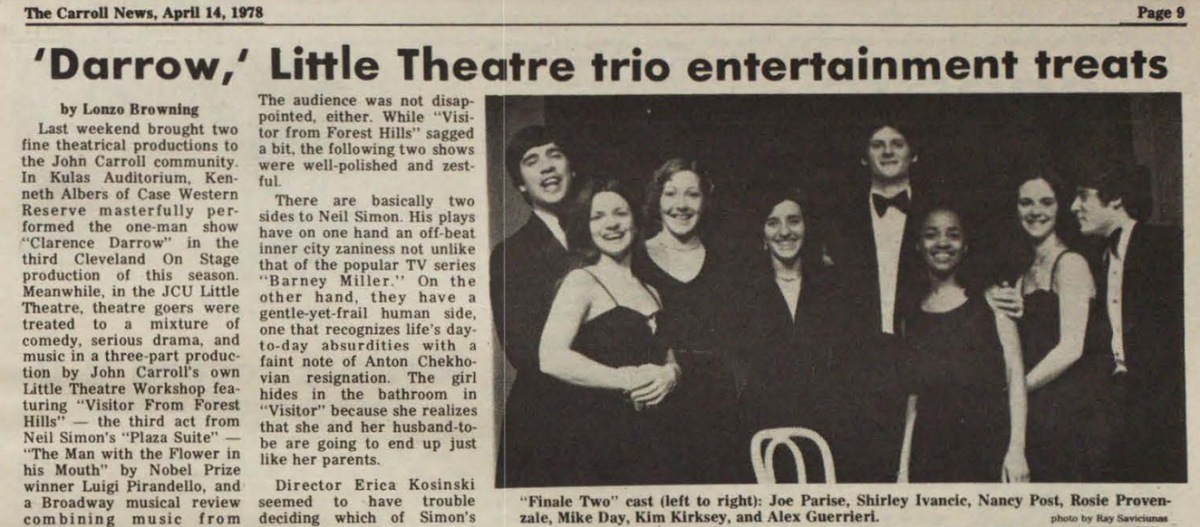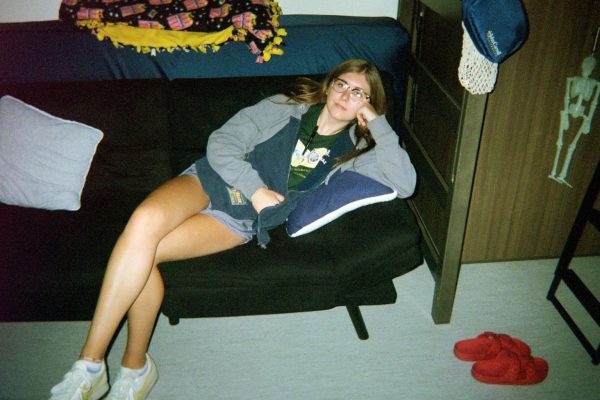“Union Makes Preparations for Carroll Dramatic Club” announces a short article written for The Carroll News in one of its inaugural editions published in 1925. The issue of a drama club was brought to the attention of the College Union when Carroll News Representative Tom Shea issued a motion for the committee to consider the addition of a yearly play to the academic calendar.
While the article left the reader anticipating the results of a class vote, we now know it led to a thriving theater department for years to come.
This seemingly small action led to a big change in the culture at John Carroll, with a myriad of plays and musicals emanating from Kulas Auditorium and the Marinello Little Theatre. In an edition of The Carroll News published in 1978, Lonzo Browning covered back-to-back-to-back nights of theater beginning with a professional performance of the one-man play, “Clarence Darrow,” followed by a student variety show including performances of songs from “Annie,” “The Wiz” and “A Chorus Line.”
The JCU actors performed to a sold-out crowd in the Little Theatre. Browning said, “And let me say this: the music is good—and so are the performers.” However, the eventual decline in theatre interest was evident in a small showing for the “Clarence Darrow” performance put on by Cleveland On Stage. “The auditorium was not even half filled on any of the nightly performances,” said Browning.
Presently students and administrators alike are making a concerted effort to bring the performing arts back, with the resurgence of a theater club and the introduction of the JCU Fine Arts department.
Amy Payne, the recently appointed assistant director of Student Engagement for the Arts, was eager to learn more about the history of theatre at John Carroll. “The arts are such a huge outlet for everyone,” she said. “We’re all creative and we don’t have to be fine arts majors. We can be a nursing student and still use creative arts as a resource, as an outlet.”
Despite a lack of shows and productions, Payne said Kulas Auditorium has a large collection of costumes such as “fur coats, dresses from the 1920s, dresses from the 40s” that have endured in the costume closet, waiting to return to the spotlight.
With such a vast history of theatre at JCU, Payne hopes to continue the legacy of the performing arts for the next generation. “My five-year plan is to bring theater back as a minor and then bring more classes that are business education for theater arts administration, so that students can take finance but see how [they] can use finance in the arts.”
For 100 years, theatre has been a part of many students’ lives at John Carroll. With the resurgence of the performing arts, efforts are being made to ensure that the Little Theatre and Kulas stages are a positive outlet for students in the years to come.



